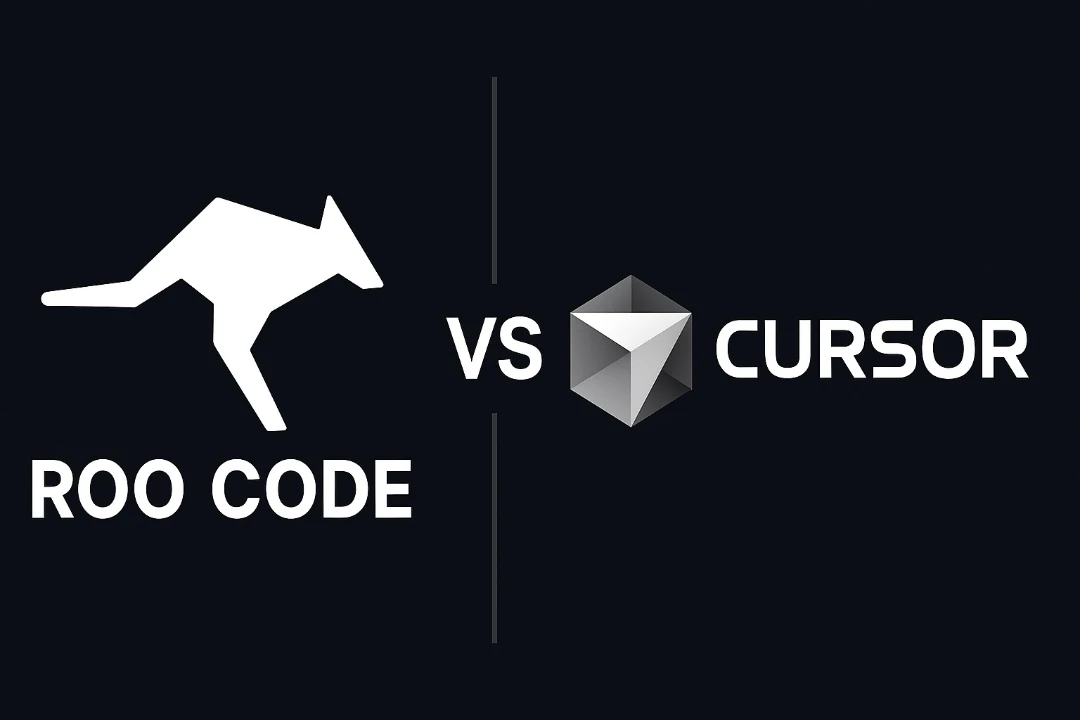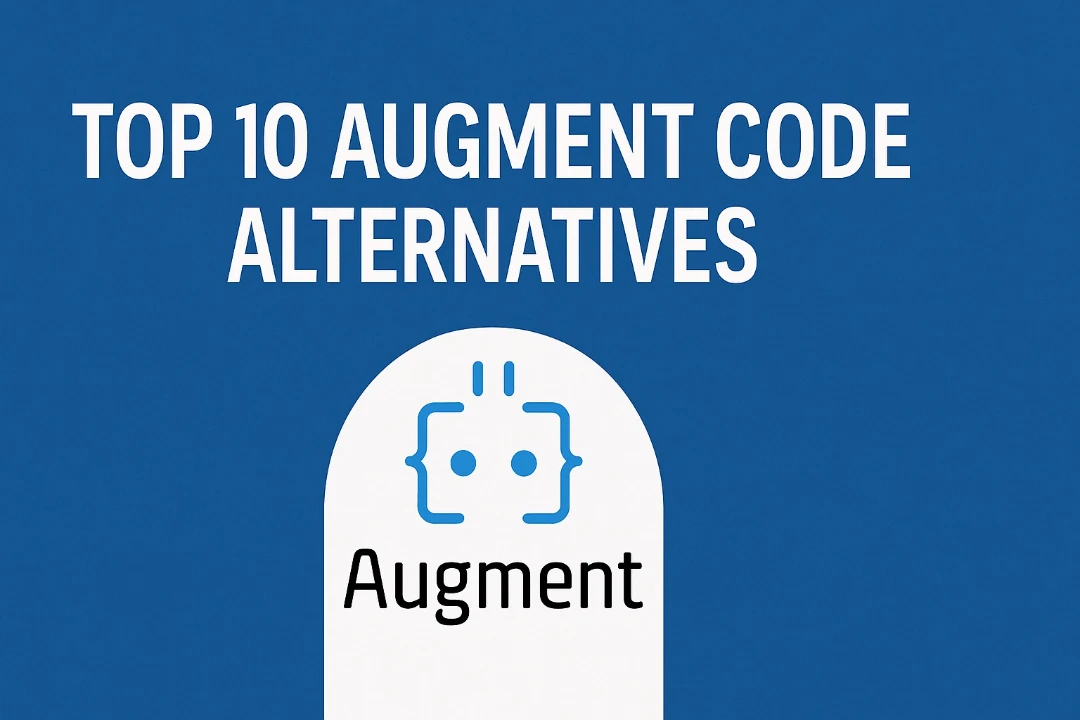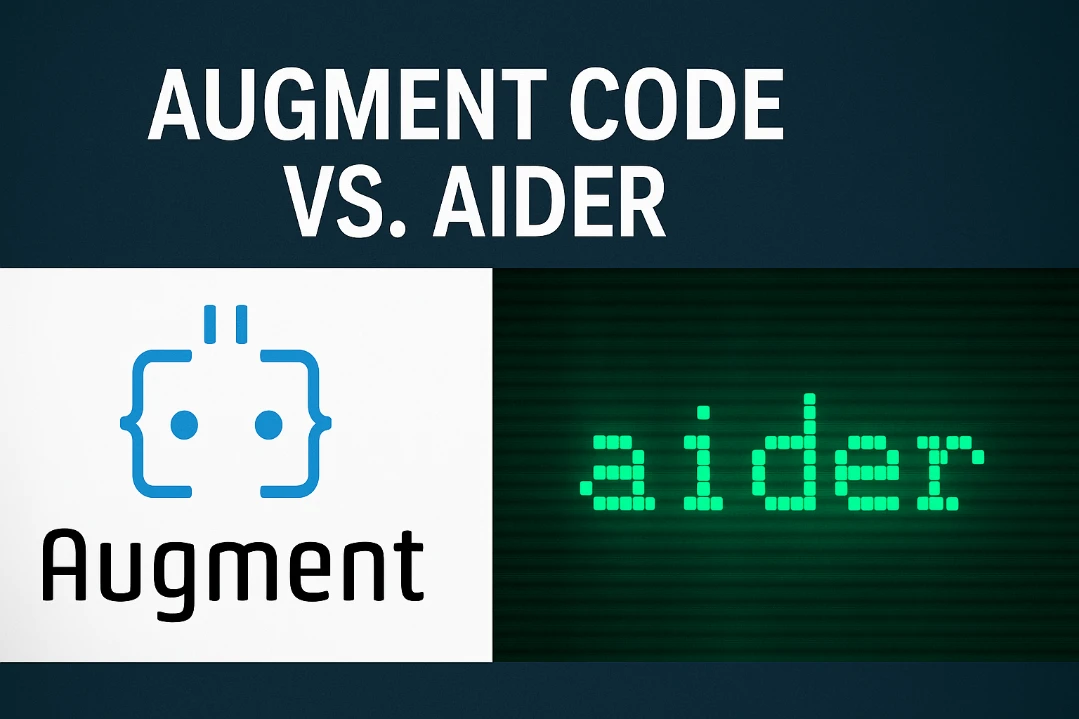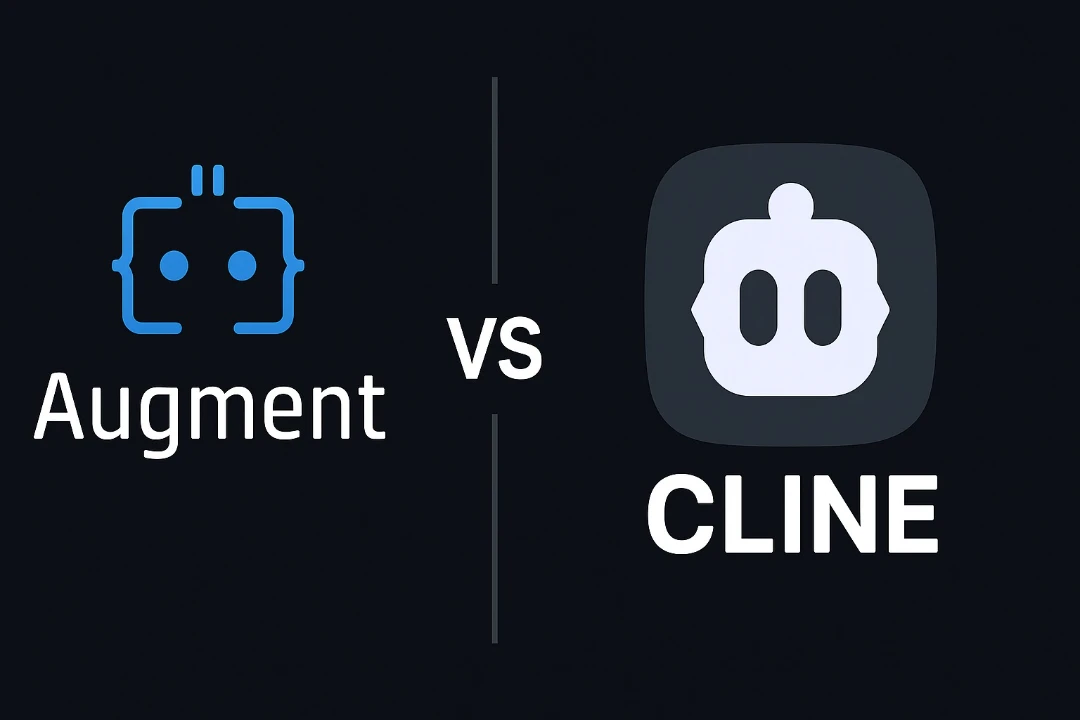
Roo Code vs Cursor: The Ultimate AI Coding Assistant Comparison Guide for 2025
Roo Code vs Cursor: The Ultimate AI Coding Assistant Comparison Guide for 2025
In the rapidly evolving landscape of AI-powered coding tools, developers are faced with an expanding array of options designed to enhance productivity and streamline workflows. Two standout contenders in this space are Roo Code and Cursor, each offering unique approaches to AI-assisted development. While both promise to revolutionize how developers write, debug, and maintain code, their implementations, strengths, and ideal use cases differ significantly.
This comprehensive guide will explore the key differences between these two powerful tools, helping you determine which might better align with your development needs, workflow preferences, and technical requirements.
The Origin and Evolution of Roo Code and Cursor
Roo Code: The Feature-Rich Fork
Roo Code (previously known as Roo Cline) began as a fork of the popular Cline extension for VS Code. Building on Cline's solid foundation of autonomous coding capabilities, Roo Code has expanded into a highly customizable and feature-rich AI coding assistant that integrates seamlessly with your existing development environment.
Open-source autonomous AI coding agent with extensive customization and multi-model support
Roo Code operates as a VS Code extension that brings powerful AI assistance into your familiar editor. Key capabilities include:
- Creating and editing files with contextual awareness
- Executing terminal commands with user permission
- Multiple specialized interaction modes
- Browser automation for testing and debugging
- Comprehensive codebase understanding
With its growing popularity in the developer community, Roo Code has established itself as a versatile and powerful tool for developers who want to enhance their existing workflow rather than switching to an entirely new editor.
Cursor: The Integrated AI-First Editor
Cursor takes a fundamentally different approach as a standalone code editor built on VS Code's foundation but redesigned from the ground up to integrate AI capabilities at its core. Developed by Anysphere, Cursor represents an all-in-one solution where AI assistance is intrinsic to the editing experience rather than added as an extension.
AI-powered code editor that combines powerful coding assistance with advanced AI capabilities
As a complete editor with embedded AI capabilities, Cursor offers:
- Integrated chat interface within the editor
- Agent mode for autonomous coding tasks
- Terminal command execution and automation
- Natural language code editing and generation
- Direct codebase questioning and exploration
Launched with substantial venture backing, Cursor has positioned itself as a premium all-in-one solution that promises a cohesive AI-powered development experience, attracting over a million users since its inception.
Core Feature Comparison
When evaluating AI coding assistants, understanding their core capabilities is essential. Let's explore how Roo Code and Cursor compare across key functionality areas:
Code Generation and Editing
Roo Code:
- Contextual code generation based on your codebase
- Efficient diff-based editing that modifies only necessary parts
- File creation and editing through natural language instructions
- Automatic detection and fixing of incomplete code segments
- Implements improvements on Cline's solid editing foundation
Cursor:
- Native integration of code generation into the editor
- Full editor control by the AI for comprehensive changes
- Real-time suggestions and code completion
- Code explanation and documentation generation
- "AI-first" approach to code editing and creation
Key Difference: While Roo Code enhances your existing VS Code workflow with powerful AI capabilities, Cursor provides a more tightly integrated experience where the boundary between editor and AI assistant is deliberately blurred, creating a more unified but potentially less familiar environment.
Terminal Command Execution
Roo Code:
- Execute commands in your existing VS Code terminal
- Real-time output processing and response
- Permission-based execution model for security
- Background task support for long-running processes
- Customizable notification handling for terminal events
Cursor:
- Similar terminal execution capabilities
- Integrated terminal within the Cursor environment
- AI-suggested commands based on context
- Query terminal output directly
- Complete terminal automation sequences
Key Difference: Both tools offer robust terminal interaction, but Cursor's implementation feels more native to its environment, while Roo Code integrates with your existing VS Code terminal setup. The practical capabilities are similar, though Cursor sometimes offers more streamlined terminal workflows.
Multiple Operational Modes
Roo Code:
- Expanded mode selection: Code, Architect, Ask, and custom modes
- "Architect" mode specialized for system design
- "Ask" mode focused on answering technical questions
- Custom mode creation for specialized workflows
- Per-mode configuration of tools and permissions
Cursor:
- Three primary modes: Agent, Ask, and Edit
- Agent mode for proactive AI assistance
- Ask mode for on-demand help
- Edit mode for traditional coding without AI interference
- Configurable AI model selection per mode
Key Difference: Roo Code offers more extensive customization and specialized modes, allowing developers to create tailored experiences for different tasks. Cursor's approach is more streamlined with three core modes that cover most use cases but with less granular customization.
Model Support and Flexibility
Roo Code:
- Support for a wide range of models via multiple providers
- OpenRouter, Anthropic, OpenAI, Google AI Studio integration
- Enhanced support for Gemini models
- Compatible with local models through LM Studio/Ollama
- OpenRouter compression for reduced token usage
Cursor:
- Support for multiple AI models including GPT-4o, Claude 3.5/3.7 Sonnet
- DeepSeek, OpenAI, and Anthropic integration
- Custom model configuration
- O1 model support for specialized coding tasks
- Usage-based pricing with model-specific request limits
Key Difference: While both tools support multiple AI models, Roo Code typically offers more flexible provider options and better optimization for cost management, whereas Cursor provides a more curated selection of models optimized for their environment.
User Interface and Interaction Design
Roo Code:
- Operates within familiar VS Code interface
- Chat panel for interaction with the AI assistant
- Mode-switching UI for quick context changes
- Optional sound effects for important events
- Support for file and image sharing in chats
Cursor:
- Complete redesigned editor experience
- Integrated chat with context-awareness
- Unified interface for all AI interactions
- Keyboard shortcuts optimized for AI workflows
- Modern, clean aesthetic with focus on user experience
Key Difference: This represents perhaps the most fundamental difference between the two tools. Roo Code enhances your existing VS Code experience, maintaining familiarity while adding powerful features. Cursor offers a reimagined editor built around AI as a core component, with a polished interface but requiring adaptation to its approach.
User Experience Analysis
The user experience significantly impacts productivity and satisfaction with AI coding tools. Here's how Roo Code and Cursor compare:
Interface Design and Usability
Roo Code:
- Feature-rich interface with customization options
- Mode-switching controls for different contexts
- Familiar VS Code environment reduces learning curve
- Progressive discovery of advanced features
- Some complexity from extensive feature set
Roo Code's interface philosophy builds on the familiar VS Code experience, adding AI capabilities without fundamentally changing how you interact with your editor. This approach minimizes disruption but can introduce some visual complexity as features are added.
Cursor:
- Clean, modern interface designed specifically for AI interaction
- Thoughtfully designed keyboard shortcuts for AI workflows
- Contextual UI elements that appear when needed
- Cohesive visual design throughout the application
- Streamlined experience with fewer distractions
Cursor offers a more aesthetically refined and cohesive experience, with each element designed specifically for AI-powered workflows. The result is visually pleasing and intuitive for its specific paradigm, though it requires adapting to a new environment.
Setup and Configuration
Roo Code:
- Simple installation via VS Code marketplace
- Configuration through standard VS Code settings
- Project-level configuration files for team standardization
- Learning curve primarily associated with advanced features
- Uses familiar VS Code extension patterns
Cursor:
- Standalone application installation
- First-time setup includes VS Code settings import
- Familiar settings interface based on VS Code
- Additional AI-specific configuration options
- Requires completely switching editors
The setup experience reflects the fundamental difference in approach - Roo Code integrates into your existing environment, while Cursor requires committing to a new editor. This makes Roo Code's initial adoption friction lower, though Cursor attempts to ease transition through settings import.
Learning Curve
Roo Code:
- Moderate learning curve for basic functionality
- Steeper curve for advanced features and customization
- Builds on existing VS Code knowledge
- Progressive discovery of capabilities
- Documentation and community support for learning
Cursor:
- Steeper initial curve requiring adaptation to a new editor
- Well-designed onboarding experience
- Intuitive AI interaction patterns once learned
- Investment in learning a new environment
- Excellent documentation and tutorial resources
The learning experience differs significantly based on your starting point. Developers already comfortable with VS Code will find Roo Code's learning curve gentler, focused only on the new AI capabilities. Cursor requires adapting to both a new editor and its AI integration, though its design makes this process as smooth as possible.
Performance and Efficiency
Speed and Responsiveness
Roo Code:
- Optimized for performance with diff-based editing
- Efficient token usage improves response times
- Performance varies by selected AI model
- May exhibit occasional performance variability
- Operating as an extension can sometimes impact responsiveness
Cursor:
- Built from the ground up for performance
- Native integration provides smoother experience
- Optimized for specific supported models
- Generally responsive and snappy interface
- Consistent performance across the application
In real-world usage, Cursor's purpose-built design gives it a slight edge in overall responsiveness and performance consistency, particularly for complex operations. Roo Code performs admirably for most tasks but occasionally shows its nature as an extension rather than a native implementation.
Resource Utilization
Roo Code:
- Moderate to high memory usage depending on features
- Efficient token usage through optimizations
- Resource consumption added to VS Code's baseline
- Performance impact depends on host machine capabilities
- Optimized for large codebases through efficient indexing
Cursor:
- Optimized standalone application
- Potentially higher baseline resource requirements
- Better resource scaling for complex operations
- Complete control over resource allocation
- Smooth performance on modern development machines
Resource utilization patterns differ based on implementation approach. As an extension, Roo Code adds its resource needs to VS Code's baseline, while Cursor has complete control over its resource allocation as a standalone application. On powerful development machines, these differences may be negligible.
Token Usage Efficiency
Roo Code:
- Diff-based editing reduces token consumption
- OpenRouter compression further reduces token needs
- Strategic model selection to minimize costs
- Mode-specific token optimizations
- Generally lower token usage for equivalent tasks
Cursor:
- Optimized token usage for supported models
- Request-based limitations on certain plans
- "Fast" and "slow" request differentiation
- Less granular token optimization options
- Potentially higher token usage for equivalent tasks
Token efficiency is an area where Roo Code shows a clear advantage, with multiple optimization strategies that can significantly reduce API costs. Cursor provides less visibility and control over token usage, though it attempts to optimize within its more opaque system.
Cost Considerations
Understanding the financial implications of each tool is crucial for both individual developers and teams.
Pricing Models
Roo Code:
- Free to install as a VS Code extension
- Token-based pricing through your chosen API provider
- No additional subscription fees beyond API costs
- Support for free models like Gemini 2.0 Flash
- Potentially lower overall costs due to token optimizations
Cursor:
- Tiered pricing model:
- Hobby Tier: Free with restricted premium model usage
- Pro Tier: ~$20/month with limit on "fast requests"
- Business Plans: ~$40/user/month with additional allotments
- Request-based limitations rather than pure token counting
- Additional costs for API usage beyond certain limits
- Premium features locked behind paid tiers
The pricing approaches differ fundamentally. Roo Code follows an open-source model where you pay only for the AI models you use, while Cursor implements a traditional SaaS pricing structure with tiered features and usage limits. For heavy users, Roo Code's token optimizations can lead to significant savings, while Cursor's predictable pricing might appeal to those who prefer fixed costs.
Cost Optimization Strategies
Roo Code:
- Model selection for cost-effectiveness
- Diff-based editing for token efficiency
- Support for free Gemini models
- OpenRouter compression
- Mode-specific optimizations
Cursor:
- Strategic use of "fast" vs "slow" requests
- Unlimited slow requests on most plans
- Optimized prompting patterns
- Careful mode selection to manage costs
- Local model options for some workflows
For cost-conscious developers, Roo Code provides more direct control over API usage and costs through its various optimization features. Cursor's approach is more opaque but attempts to provide value through its unlimited slow requests model.
Real-World Cost Examples
Based on community reports and estimates:
Individual Developer (moderate usage):
- Roo Code: ~$5-15/month with mixed model strategy
- Cursor: $0-20/month depending on tier and usage patterns
Small Team (5 developers):
- Roo Code: ~$25-75/month with optimization
- Cursor: ~$100-200/month on Pro/Business tiers
Large Team (20+ developers):
- Roo Code: $100-300/month with full optimization
- Cursor: $400-800/month on Business tier
These figures vary widely based on usage patterns, but illustrate the potential cost differences, with Roo Code generally being more economical for heavy users leveraging its optimization features.
Ideal Use Cases
Different development scenarios call for different tools. Here's where each assistant shines:
Roo Code Excels For:
Developers Committed to VS Code
If you've heavily invested in VS Code extensions, themes, and workflow, Roo Code allows you to add powerful AI assistance without abandoning your familiar environment.
Cost-Conscious Teams and Individuals
Roo Code's token optimization features and support for more cost-effective models make it ideal for those working with limited API budgets or looking to maximize efficiency.
Specialized Development Workflows
Teams with specific, specialized workflows benefit from Roo Code's custom modes and configuration options, which can be tailored to particular development patterns.
Multi-Role Development
Developers who frequently switch between different types of tasks (coding, architecture planning, debugging) benefit from Roo Code's specialized modes optimized for each context.
Enterprise Environments with Security Requirements
Organizations with strict security policies may prefer Roo Code's integration with existing approved tools rather than adopting an entirely new editor.
Cursor Shines For:
Developers Open to a New Editor Experience
If you're willing to adapt to a new environment optimized specifically for AI-assisted coding, Cursor offers a more cohesive and polished experience.
Teams Seeking a Unified AI Development Environment
Organizations looking to standardize on a single AI-first development platform can benefit from Cursor's consistent experience and team features.
Projects Requiring Intensive AI Collaboration
For development that heavily leverages AI assistance throughout the process, Cursor's native integration can provide a more seamless experience.
Early Adopters and Innovation-Focused Teams
Teams that prioritize cutting-edge tools and are willing to adapt their workflows to new paradigms will appreciate Cursor's forward-looking approach.
Aesthetically-Focused Developers
Those who value a modern, clean interface specifically designed for AI interaction may prefer Cursor's purpose-built environment.
User Feedback and Community Insights
Real-world experiences provide valuable context for understanding these tools. Here's what developers are saying:
What Developers Say About Roo Code
Alex K., Backend Engineer:
"Roo Code's customizability is what keeps me using it daily. I've created a custom mode specifically for API development that handles documentation, implementation, and testing all through specialized prompts. The token optimization features have cut my API costs in half compared to other assistants."
Sarah M., Full-Stack Developer:
"Being able to stay in VS Code while getting powerful AI assistance has been game-changing for my workflow. Roo Code feels like having a senior developer looking over my shoulder, but one that perfectly understands my entire codebase and can edit files directly when needed."
Team Lead at a Financial Services Company:
"We chose Roo Code for our development team because it integrated with our existing security-approved VS Code setup. The custom modes allow different team members to optimize for their specific roles, while keeping everyone in the same tooling ecosystem."
Common Praise Points:
- Extensive customization options
- Cost efficiency through token optimization
- Multiple specialized modes
- Integration with familiar VS Code environment
- Active community development
Common Criticism Points:
- Occasional stability issues with cutting-edge features
- Steeper learning curve for advanced capabilities
- Interface can feel cluttered with options
- Performance occasionally impacted by VS Code limitations
- Less polished visual experience
What Developers Say About Cursor
Michael T., Startup Founder:
"Cursor has dramatically accelerated our prototype development. The integrated environment means less context switching, and the AI feels like a natural extension of the editor rather than an add-on. For a small team like ours, this cohesive experience has been worth adapting to a new editor."
Jennifer L., Senior Developer:
"The user experience in Cursor is just outstanding. Everything feels thoughtfully designed around AI interaction, and once you learn the keyboard shortcuts, the workflow becomes incredibly smooth. I was hesitant to switch editors, but I'm significantly more productive now."
Chris D., Independent Developer:
"I appreciate the predictability of Cursor's pricing model. With the Pro tier, I know exactly what my monthly cost will be, and the unlimited slow requests mean I can leverage AI assistance throughout my workflow without constantly worrying about token counts."
Common Praise Points:
- Beautiful, cohesive user interface
- Smooth, integrated AI experience
- Well-designed keyboard shortcuts
- Predictable pricing model
- Regular feature updates and improvements
Common Criticism Points:
- Requires switching from established editors
- Request limitations on certain tiers
- Less customization than extension-based alternatives
- Some VS Code extensions not available
- Learning curve for the new environment
Future Outlook
Both tools continue to evolve rapidly, with several emerging trends:
Roo Code's Evolution Path
Roo Code appears to be focusing on:
- Even more specialized modes for different development contexts
- Further cost optimization features
- Enhanced integration with additional development tools
- Improved performance within the VS Code environment
- Expanded model support and provider options
Cursor's Development Direction
Cursor seems to be heading toward:
- Deeper AI integration throughout the development process
- More sophisticated agent capabilities
- Enhanced team collaboration features
- Additional language model options
- Refinement of the user experience
Making Your Decision
Choosing between Roo Code and Cursor ultimately comes down to your specific needs, preferences, and constraints. Consider these key questions:
Are you willing to switch editors? This is perhaps the most fundamental question. Roo Code enhances your existing VS Code setup, while Cursor requires adopting a new editor.
How important is cost optimization? If managing API costs is a priority, Roo Code's optimization features may give it an edge.
Do you prefer customization or cohesion? Roo Code offers more extensive customization options, while Cursor provides a more cohesive, purpose-built experience.
What's your team's adoption capacity? Consider how easily your team can adapt to new tools. Roo Code may offer a gentler transition for VS Code users.
What are your security and compliance requirements? Enterprise environments with strict tool approval processes may find Roo Code's extension model easier to implement.
Conclusion
Both Roo Code and Cursor represent powerful approaches to AI-assisted development, each with distinct philosophies and strengths:
Roo Code excels as a highly customizable VS Code extension that brings powerful AI capabilities to your existing environment. Its cost optimization features, specialized modes, and integration with familiar workflows make it ideal for developers committed to VS Code and those seeking maximum flexibility.
Cursor shines as a purpose-built AI-first editor offering a cohesive, polished experience for those willing to adapt to a new environment. Its elegant interface, streamlined workflows, and native AI integration provide a glimpse of what purpose-built AI development tools can achieve.
The "best" choice depends entirely on your specific needs, preferences, and constraints. Many developers even use both tools for different contexts - Roo Code for certain projects or tasks and Cursor for others, leveraging the strengths of each.
By carefully evaluating these factors against your specific development needs, you can select the AI coding assistant that will best enhance your team's productivity and code quality.


